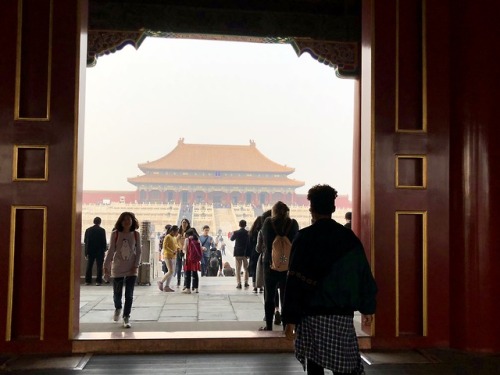#aaleah oliver
Beijing
by Aaleah Oliver
I had imagined all cities in China to look like the Dongcheng district of Beijing - a mix of traditional Chinese architecture- pagodas and tiled roofing with modern skyscrapers and high- tech facets. But there was more to the area than I had initially realized. The main road ran through a hutong, or a maze-like community with narrow unnamed streets. Though the word hutong can be traced back to 13th C. China as referring solely to the narrow streets between single family courtyard houses, they have come to refer to busy cramped neighborhoods characterized by multi-family homes, and shared public restrooms as a result of rapid urbanization and increased housing demand. In recent years, many Beijing hutongs have been demolished over public health and safety concerns as they are often stigmatized as dangerous and dirty places. Some sections of hutongs have been preserved as part of larger China-wide efforts at cultural preservation in cities although this active preservation finds itself in the midst of a larger debate over what, how, why and for whom certain aspects of Chinese culture should be preserved.

The pavement picked up outside of the barricade disallowing cars and bikes to enter the residential section of the hutong. There, the pedestrian and e-bike only street began, it quickly widened with shops selling elegant qipaos and silk scarves next to shops selling cheap slippers and endless options for food stores on either side eventually making way to the main road, just two blocks from King’s Joy hotel where The LIU Global China Center Students spent our week in Beijing. Every morning, the lobby of King’s Joy would swell with people, from all over of all ages. Many of them, like us, would join the rush hour foot traffic making our ways to the nearby metro station, Forbidden City and Tian’anmen Square.
Tian’anmen Square is a historic gathering place facing the gate to the Forbidden city. It was where thousands of students from all over China gathered to demand freedoms of speech and government accountability in 1989. The students were met with violence, jailed, and many were killed in clashes with police and military forces. The action at Tiananmen in 1989, often called the June 4th uprising, marked a shift in that youth generation who didn’t have a memory of the Cultural Revolution or Mao Zedong. June 4th was a perspective-altering event that disillusioned Chinese youth with their government and the reforms they sought. To enter the Tian’anmen Square area, we walked under a metal detector and put our belongings through a bag scanner. On the Square, plain-clothed police officers walked in between tourists taking photos and group tours. A large flower bouquet sculpture adorned the middle of the square in celebration of China’s National day.
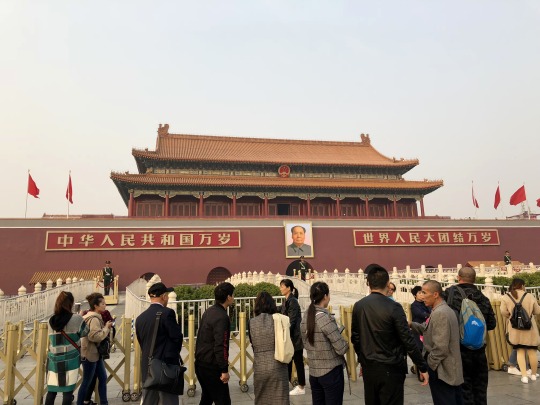
We visited the Square on a clear day and were gifted with sunlight for three whole consecutive days during the trip. But it was during our journey up the Great Wall that the smog made a vengeful comeback. During exercise, you breathe in four times the amount of air that you breathe during normal activities. That meant we’d breathe in four times the amount of smog during our hike up the wall than we had been during our site visits and lectures. Osman, our health and safety guy for the semester passed out 3M medical grade air filtration masks to the six of us students, Lyric our student coordinator and Vivian our program director on the bus ride to the wall. The masks fit snugly over our noses and mouths. They also made it difficult to breathe. By the time we reached the ticket collector, most of us had taken them off.
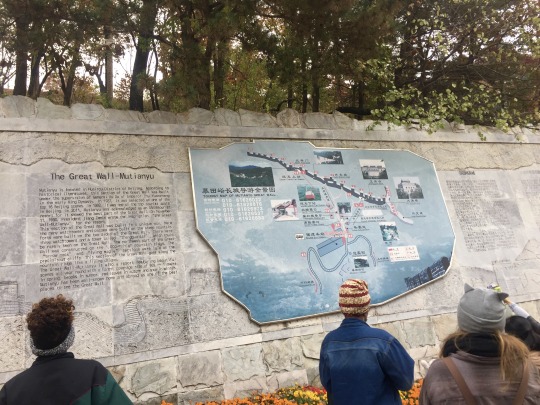
The smog in Beijing has developed as a public health and safety concern over the past few decades in China. With over 300,000 deaths related to bad air quality occurring each year. Though in more recent years, Beijing has been experiencing more clear sky days as a result of stricter environmental protection policies. In partial preparation for the Beijing trip, our Global Studies III:Theories, Issues and Solutions class watched “Under the Dome,” a documentary on smog in Beijing. One moment that stood out to me in the film, was investigative journalist Chai Jing interviews a child who had never seen a blue sky in her lifetime, and who, at the rapid rate of industrialization by any means necessary in China in 2016, might have never known a reality outside of that.
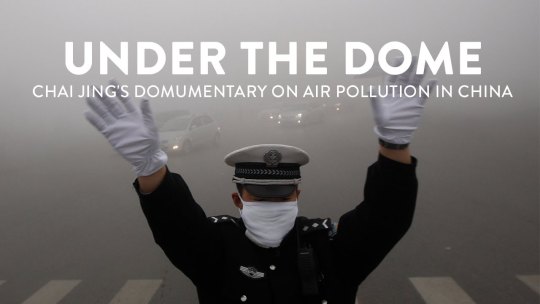
Our visit to Beijing ended in the office of the UNDP, where we spoke with the Program Manager of the Energy and Environment team and his two expert colleagues for Sustainable Development Goals (SDG) localization and youth empowerment and learned about the UNDP’s mandate in China and what the nation is currently doing to eliminate harmful emissions. During the UNDP visit, we learned about hydrogen powered vehicles that produce zero harmful emissions, China’s pilot development program that focuses on sustainably developing the economies of three cities with hopes that the program will be expanded to cities all over China, and the engagement of Chinese youth in environmentally conscious social enterprises. The tone our visit to the UNDP ( United Nations Development Programme in China ) office was overly positive with our speakers generally hopeful of the future of China, despite the time it has taken the country to get there.
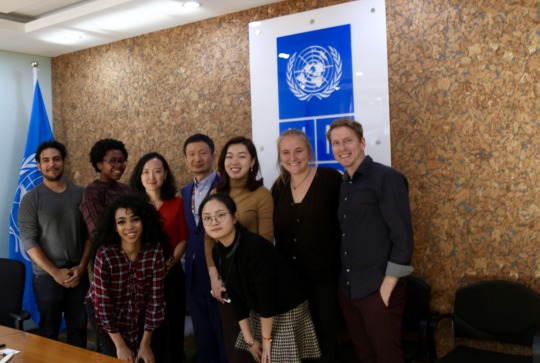
I noticed that absent from the development plans was any initiative directed toward culture, migrant workers or women. I attributed this by and large to path-dependency or the idea that tries to explain the continued use of a model based on historical preference. Historically, women have been left out of national development discussions, as have migrant workers and minority ethnic communities. Contemporarily, organizations are trying to change that.

We met Yiping Cai, an Executive Board Member of Development Alternatives with Women for a New Era (DAWN) in a Beijing cafe on Tuesday afternoon, our third day in Beijing. (DAWN) is a network of feminist scholars and activists who research and document the impact of current trends of development on women in their home countries, participate in discussions and advocate for “ethical and socially responsive development alternatives”. Over coffee, we discussed major issues affecting women in China, one of them being the “leftover woman” campaign – a state-sponsored campaign aimed at shaming women into marrying earlier, often at the expense of their educational and professional careers as well as their economic and political freedoms.
A lot of efforts of DAWN and the Feminist movement in China is focused on creating spaces for rural and urban women in their governments and societies and empowering them to participate. Yiping Cai introduced to us briefly, the power cube framework, a visual representation of the interrelationships of power dynamics on local, national and global levels.
I found it interesting how forms of power aren’t presented as neutral and are inherently stacked against minority and marginalized peoples. That observation reminds me to survey the power that I have in certain spaces and to make sure that my words or actions do not contribute to the silencing of groups of people or the perpetuation of harmful ideologies.
I ended the Beijing trip holding on to the belief that for communities, nations, and for people, actions can be self-reinforcing, so a step in the right direction, with the right amount of encouragement and accountability, will one day lead to lasting positive change.
Post link


